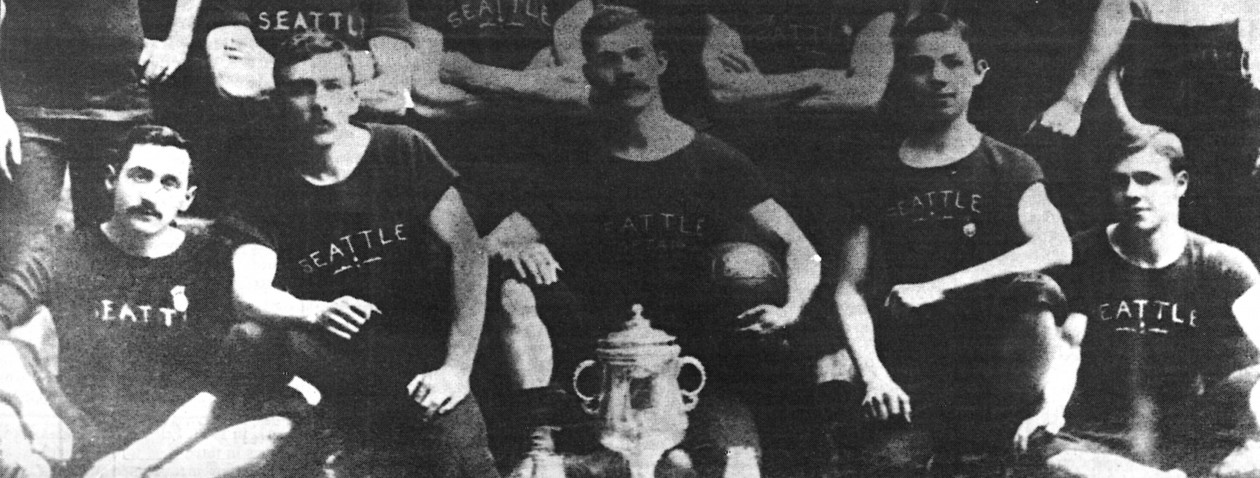One evening, not so long ago, Peter Fewing was dining out with friends when a tablemate mentioned that Fewing once played professional soccer. It made him giggle, just a little.
When Jeff Stock first signed with the original Seattle Sounders out of Tacoma’s Stadium High School, he wanted to maintain his amateur status and eligibility for the 1980 Olympic Games. Still, his earnings, when adjusted through an inflation calculator, were exponentially more than Fewing’s. In fact, in 2020 dollars it exceeds that of some top players for Reign FC today.
It’s madness, in many respects. But for those who have played at the top levels of American pro soccer the past 45 years, this hardly comes as a surprise. Any yet, none of the journeymen interviewed for this story have many complaints. In fact, all maintain they were enriched by the experience, intellectually if not financially.
“I was playing at the highest level of soccer in the country at the time,” notes Fewing, now 26 seasons into a career as Seattle University’s head coach. “It was fun, we had fans, we signed autographs, and we got two free beers and a burger at the postgame party. The sentiment was that we were having too much fun to complain.”

Fewing played a record 54 league games for FC Seattle Storm between 1985-90. The Storm, filling a void left by the original Sounders’ folding, first played in the Western Soccer Alliance, which eventually morphed into the A-League and then USL First Division. For two of those six seasons, players were paid. At the outset of 1985, Fewing and teammates such as Brian Schmetzer got $500 per game. When attendance did not meet projections, the checks were cut in half, to $250.
An Invaluable Experience
FC Seattle was much more than a glorified men’s league side. Eventually, many of the players proven pros, some with strong credentials and international caps. The coaches – Tommy Jenkins, Jimmy Gabriel, Bruce Rioch, Stuart Lee – were respected, both here and abroad. Following a first year filled with challenge matches versus NASL clubs and the U.S. National Team, attendance ranged between 1,000-3,500, mostly at Memorial Stadium. Action was televised. There were feeder teams throughout Puget Sound and twice owner Bud Greer sent the team to England and Scotland for postseason tours.
In the final season, Storm leadership opted to reinstitute player paychecks. Clive Charles, then technical director while coaching at University of Portland, offered Fewing $367 per month. Others made more, but Charles knew Fewing had nowhere to go since he operated his own summer camps and coached at Seattle U. It was a difficult pill to swallow, but he chose to play on. Come 1991, the Storm played no more.
Fewing looks back on those days with fondness and a sense of indebtedness to Greer and the coaches. He played against the likes of Manchester City, Middlesbrough and Sunderland. “We played 26 international teams, the U.S. and Canadian national teams,” he recounts. “We worked hard. I know (future Boro and Arsenal manager) Bruce Rioch loved the fact all the guys (predominantly local) wanted to be there. It was not a job for anybody.”
Olympic Pain, Sounders’ Gain
Jeff Stock had considered following his father into baseball, but attention shifted to soccer during his late teens, while playing for the Norpoint Royals and then U.S. youth national teams. His sights were set on the 1980 Olympics when the Sounders came calling. A team scout recommended signing Stock and Mark Peterson, also a member of the Royals and Olympic team.
“The maximum to remain eligible for the Olympics was $1000 a month, plus $150 living allowance,” recalls Stock. For 19-year-old high school graduates living at home and playing reserve games, it was sufficient. Then, President Jimmy Carter pulled the plug; a U.S. boycott of the Moscow Games kept all Olympians at home. It was good news for the Sounders, however, since Peterson and Stock were free to play, and Alan Hinton promptly put them with the first team in what became a magical 1980 campaign.

Peterson scored 14 goals and started 28 times while Stock, a left back, saw action in 18 matches. Following the record-breaking 25-win season, they beat a path to Hinton’s office, seeking raises. Both got contracts for $60,000 per annum. That equates to $177,000 today. Since his father, Wes, served as his agent, Jeff didn’t sacrifice a cut. “Truthfully, I shouldn’t have been paid what Mark was making since he was scoring all those goals,” confesses Stock.
Storm Clouds Gather
As it turned out, that marked the end of the American soccer’s first golden age. Two years later, the Sounders folded and soon the entire NASL followed. Compounding matters, Stock suffered a torn ACL. After brief stints in San Jose, Tulsa and Vancouver, he returned to his hometown to sign with the indoor Tacoma Stars in 1985.
While he was still earning significantly more than the FC Seattle players that season, Stock’s pay cut was drastic. He was now married with two young children. “I went from $60,000 to $27,000, and I knew I had to look for something else,” he says.

Soon he was selling commercial real estate. Before long he became an investor. But he still itched to play, and in 1987 joined Fewing on the Storm, playing for burgers and beer. In his final year the Storm won the league championship.
“I was working for food,” laughs Stock, “but we didn’t care. We trained in the evenings and played on weekends. We just enjoyed being together.”

